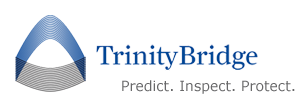Improving Plant Safety
Maturation of plant inspection programs
Today's best inspection programs look much different than the prescriptive measures of the past. Sophisticated new methodologies enable plant personnel to understand what's driving the damage and what can be done about it. Advanced RBI analysis to IOWs and piping circuitization and systemization programs provide a more comprehensive view of your equipment than ever before. With these methodologies, Trinity Bridge can help you build the inspection plan that's right for your plant. But first, here's a brief look at how inspection practices have evolved of the past few decades -- and how understanding the technologies now available can be factored into your inspection planning.
Early plant inspection techniques
Early inspection programs relied on fixed interval inspection. Equipment was inspected using routine and specialized inspection methods (straight beam UT, WFMP, dye penetrant, shear wave, some automated UT methods) at prescriptive intervals based on a maximum frequency or calculated half-life basis. Little consideration was made for process exposure, rate of damage or process variation.
Prescriptive fixed interval methodology evolved into condition-based inspection, which addressed degradation mechanisms, degradation rates and management of change (MOC) to adjust fixed intervals based on rate of degradation. This was the start of Probability of Failure (POF) analysis, though in a limited sense.
RBI and equipment life-cycle inspection planning
Risk-based inspection (RBI) took condition-based assessments and added Consequence of Failure (COF) to prioritize inspection. A broadened POF assessment added equipment failure frequencies and management systems as well as the impact of multiple degradation mechanisms versus single mechanisms. Equipment with the same POF could be evaluated and prioritized by considering COF as well.
RBI is a systematic approach lending itself to less subjectivity in assessments. A calculated POF and risk values allow for inspection intervals that change over the life of the equipment rather than fixed intervals that might be too short in the beginning of the equipment life and too long near end of life. RBI introduces equipment life-cycle inspection planning rather than year-to-year management.
Piping programs with piping systemization and circuitization
While RBI added significant data to inspection planning for equipment, a different approach was needed for piping. Originally, piping was handled as line numbers, just as the plant defined them. But that was very hard to manage.
The solution was to develop a systemization and circuitization approach to piping that collects piping into groups or systems that can be treated as one item (all in similar service) that are operationally controlled together. Circuits are groups of components (equipment/piping) that operate in similar service, i.e. the same degradation mechanisms and similar degradation rates. The knowledge gained from piping systemization and circuitization programs feeds back into the RBI program for more organized risk determination, risk ranking and inspection planning for piping; it also is used to feed into pressure vessel inspection requirements.
Monitoring operations with Integrity Operating Windows (IOWs)
Management of Change (MOC) programs were a good step and worked well to identify changes in operation that impacted the integrity of equipment/piping. However, the operational data criteria were often so broad that these programs didn’t always work as well as intended. API RP 584, Integrity Operating Windows (IOWs) outlines a program that ties the operating variables driving degradation mechanisms to an acceptable operating range of variables. Operation outside those ranges flags alerts and ultimately alarms to notify inspection and/or operations of a potential equipment integrity issue.
IOW variables are set for "Systems" (how a group of equipment is controlled or operated). However, the IOW acceptable operating ranges are defined by the weakest link "Circuit" in each system. So if one circuit is operating near the limit of the acceptable range and/or corrosion rate, the IOW's and ranges are defined by that Circuit for the whole system. This can be tied back to risk and inspection requirements to justify an upgrade if it is operationally limiting or costing too much money to maintain and assure safety.
Integrated inspection management
RBI, IOWs and Piping Programs can be done alone or in conjunction with each other. But the future of a best practice inspection program is to have all of these completed, continually updated, and managed together on an integrated basis and tied to information systems that notify the proper plant personnel with alerts and alarms. Then inspection personnel can assess the 'out of IOW range' events, recalculate risk and see if the inspection plan needs to be modified based on the event.
All of this requires sophisticated information management systems that companies have been developing in parallel, i.e., systems that monitor operating data and give feedback to a notification system. This would include a program for inspection data (all the TML/CML data as well as other inspection conducted); a RBI program that calculates risk and recommends inspection dates and priorities; and a program that takes all the inspection data and the RBI recommendations to develop a specific inspection plan for all equipment. This inspection plan needs to be tied to the operating notification system so they can be modified if an IOW event occurs.
When all the data is organized and analyzed, a sophisticated inspection management program can be developed. This includes the strategies and procedures that wrap around individual activities discussed here. For example, what does your MOC procedure require and how is it communicated? How are your inspection data evaluated to assure that you are doing the right things? How do the inspection results integrate with the recommendations from RBI? How does the IOW program integrate with both your inspection findings and RBI? How often to you re-evaluate all these programs and what triggers that re-evaluation? Are you finding unexpected damage during inspection? Are you having premature equipment leaks or failures? Do you do a lot of inspection activities that you feel is not adding value?
The integration of RBI with piping circuitization and IOWs can provide the knowledge and insight you need for inspection planning and management.

